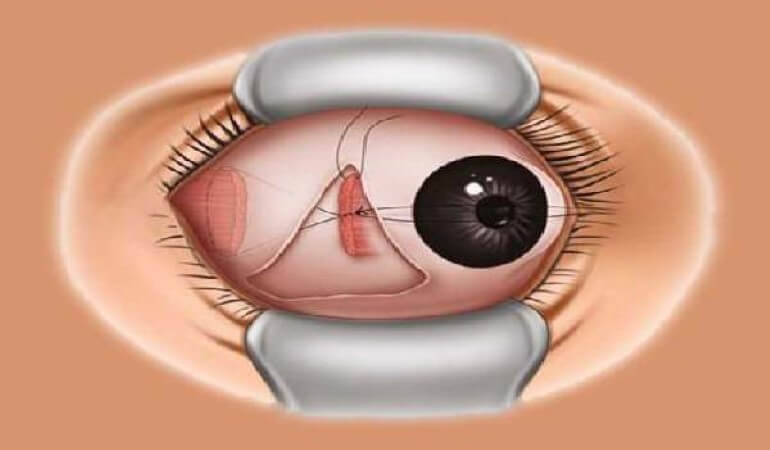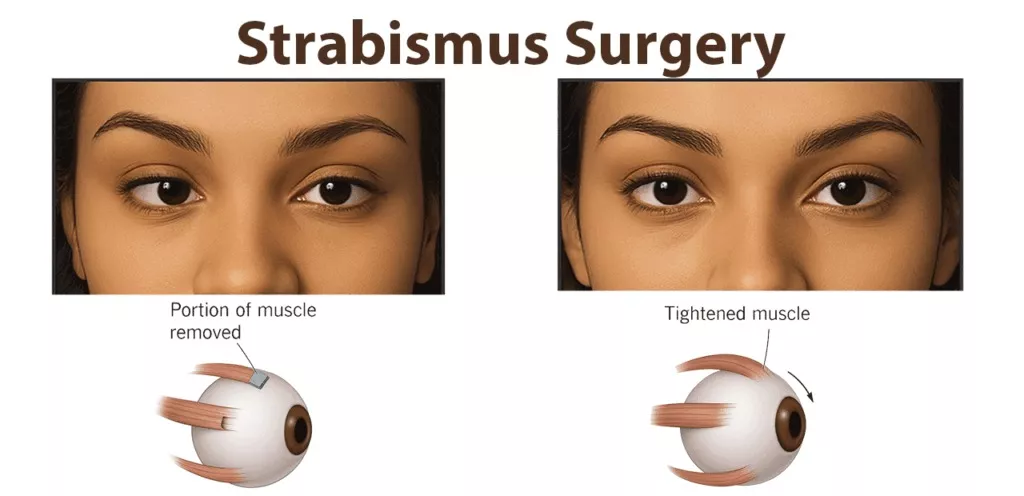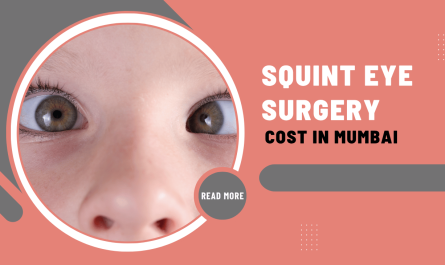Squint Surgery
Squint, also known as strabismus, is a condition where both eyes do not align properly and look in different directions. While one eye focuses on an object, the other may turn inward, outward, upward, or downward. Many people believe squint correction is only for children — but is that really true?
This blog will help you understand how age impacts squint surgery, whether adults can still benefit, and what modern advancements make treatment possible at any stage of life.
Understanding the Basics

Squint occurs when the muscles controlling eye movement don’t work together correctly, causing misalignment. Normally, both eyes focus on the same object and send coordinated visual signals to the brain. In squint, the brain receives two different images, which can lead to double vision or the brain ignoring one eye (called amblyopia or lazy eye).
While squint is often diagnosed in childhood, it can also develop later due to neurological, muscular, or refractive issues. Importantly, squint is not just a cosmetic concern — it can affect depth perception, binocular vision, and confidence.
Causes and Risk Factors
There are several reasons why squint develops, including:
- Muscle imbalance: Unequal strength or coordination in the eye muscles.
- Refractive errors: Uncorrected farsightedness (hypermetropia) that strains the eye muscles.
- Neurological conditions: Affecting eye movement control.
- Genetic predisposition: Squint often runs in families.
- Eye or head trauma: Injuries that affect eye muscles or nerves.
- Medical conditions: Such as diabetes, thyroid eye disease, or stroke.
Risk groups include infants, children with family history, and adults who develop eye strain or vision changes due to systemic illnesses.
Signs and Symptoms
The most visible sign of squint is eye misalignment — one eye turning differently from the other. Other symptoms may include:

- Double vision or blurred vision
- Eye strain or headaches
- Poor depth perception
- Tilting or turning the head to focus
- Difficulty maintaining eye contact
In children, parents may notice the eye turning in or out, especially when the child is tired or focusing on near objects. If left untreated, squint can lead to permanent vision loss in the weaker eye (amblyopia).
Diagnosis and Tests
Eye specialists perform several tests to diagnose squint and determine its severity:
- Visual acuity test: Checks how well each eye can see.
- Refraction test: Measures for glasses or corrective lenses.
- Ocular motility test: Evaluates how the eyes move together.
- Cover test: Identifies which eye deviates.
- 3D vision test (stereopsis): Measures depth perception.
In some cases, imaging tests or neurological evaluations may be required. Early and accurate diagnosis helps in planning effective treatment.
Treatment Options
Treatment depends on the type, cause, and severity of squint. The goal is to achieve proper eye alignment, restore binocular vision, and prevent amblyopia.
Non-Surgical Treatments
- Eyeglasses or contact lenses: Correct refractive errors.
- Prism lenses: Help reduce double vision.
- Eye exercises (orthoptics): Strengthen eye coordination.
- Patching: Covers the stronger eye to encourage the weaker one to work better.
Surgical Treatments
When non-surgical methods aren’t sufficient, squint surgery becomes the best option. The procedure involves tightening or loosening specific eye muscles to restore alignment.
Modern squint surgery is minimally invasive, usually done under local or general anesthesia, and offers quick recovery.
Recovery: Most patients return to normal activities within a few days. Mild redness or soreness is common and resolves within weeks.
Success Rate: Over 80–90% of patients experience noticeable improvement in alignment and appearance after one surgery.
When Is It Too Late for Squint Surgery?
A common misconception is that squint surgery is only for children. While early treatment (before age 7–8) is ideal for developing normal binocular vision, it’s never truly “too late” for squint surgery.

Even adults can benefit significantly. In adults, surgery can:
- Correct cosmetic misalignment
- Improve depth perception and visual comfort
- Reduce double vision
- Boost self-confidence and social interaction
The difference lies in visual outcome — children regain both alignment and binocular vision, whereas adults primarily gain alignment and relief from visual discomfort.
So, whether you’re 20, 40, or even 60, you can still undergo squint correction with successful results, especially when performed by an experienced ophthalmologist.
Lifestyle Tips & Prevention
While not all types of squint can be prevented, maintaining good eye health helps reduce strain and detect problems early:
- Get regular eye check-ups every 6–12 months.
- Manage screen time with frequent breaks (20-20-20 rule).
- Maintain a balanced diet rich in Vitamin A, C, and omega-3s.
- Protect eyes from injury and excessive sunlight.
- Treat conditions like diabetes or thyroid disorders promptly.
Expert Insights
“Squint surgery can be done at any age. While early correction helps in developing normal vision, adult patients also experience excellent cosmetic and functional results with modern surgical techniques,”
says Consultant Ophthalmologist at Laxmi Eye Hospital.
With advancements in microsurgery and anesthesia, age is no longer a limitation — timely consultation is what truly matters.
Patient Awareness & Misconceptions
Myth 1: Squint surgery is only for kids.
Fact: Adults can also undergo surgery safely and effectively.
Myth 2: Surgery is risky or painful.
Fact: It’s a safe, quick, and nearly painless procedure with local or general anesthesia.
Myth 3: Squint doesn’t affect vision.
Fact: Untreated squint can cause eye strain, double vision, and even permanent vision loss in one eye.
Consultation Information — Laxmi Eye Hospital
Laxmi Eye Hospital is one of Mumbai’s most reputed and trusted eye hospital chains with 30+ years of excellence in eye care. Known for its experienced ophthalmologists, transparent treatment, and state-of-the-art technology, the hospital offers advanced care across:
- Specs Removal / LASIK (Bladeless LASIK, ICL, IPCL, Contoura Vision LASIK)
- Cataract Surgery
- Glaucoma Treatment
- Diabetic Eye Care
- Cornea Clinic
- Retina Treatment
- Pediatric Ophthalmology
📍 Panvel, Kharghar, Kamothe, and Dombivli
Book your consultation today for personalized squint treatment by expert ophthalmologists.
FAQs
1. Can adults get squint surgery?
Yes. Adults can undergo squint surgery to improve alignment, reduce double vision, and enhance appearance.
2. Is squint surgery painful?
No. It’s performed under anesthesia and causes minimal discomfort.
3. How long is recovery after squint surgery?
Most patients resume daily activities within a few days, with complete healing in 3–4 weeks.
4. Can squint return after surgery?
Rarely, but in some cases, additional adjustments may be required.
5. Is squint surgery covered by insurance?
Yes, in many cases, especially if the surgery is medically necessary.
Conclusion
It’s never too late to correct a squint. Whether for improved appearance, better visual comfort, or restored confidence, modern squint surgery offers safe and effective results for people of all ages.
If you or your loved one notice symptoms of eye misalignment, don’t wait — consult an eye specialist at Laxmi Eye Hospital and take the first step toward clearer, more confident vision.




